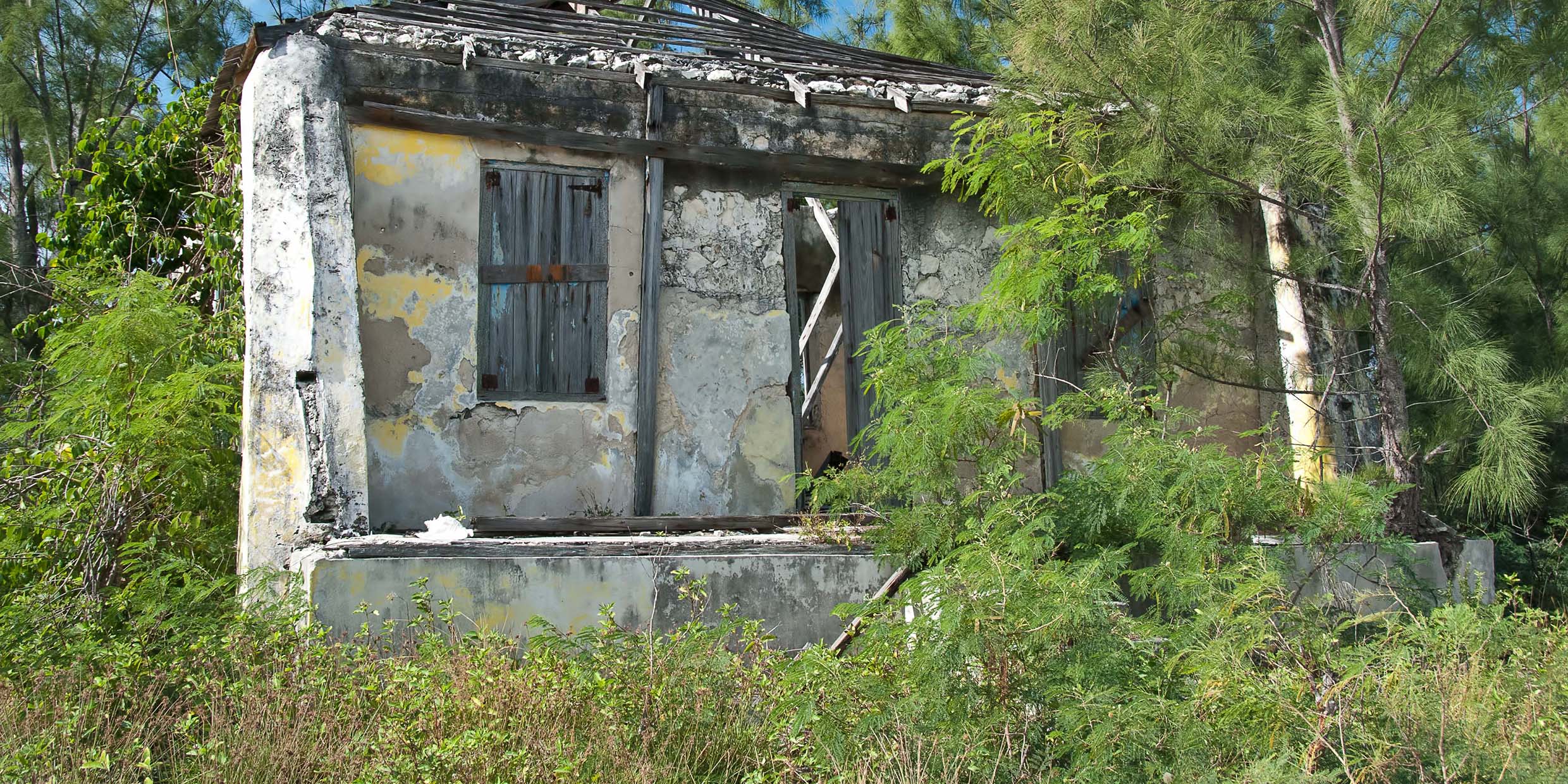Originally published 7 April 1997
Recently, on the island of Great Exuma in the Bahamas, I came upon a small abandoned house in the woods not far from where I was staying. A tangle of sea grape made the place almost inaccessible — like Sleeping Beauty’s castle.
Forcing passage through crisscrossed branches, I entered the house.
The two-room building was constructed of stuccoed blocks, with wooden doors and windows. The windows where shuttered in the old Bahamian way, without glass. From each door and window frame a finger-thick brown tube snaked up the interior walls to one of several large earthen nests, the size of beach balls, plastered under the roof.
The doors, frames and shutters appeared intact, but crumbled to powder at my touch.
This was the work of Bahamian dampwood termites, Nasuatermitidae, which are generally found building their nests in trees, but will happily devour a house if provided.
I was standing in the middle of a busy recycling operation — termites turning timber back into soil.
Dampwood termites are fragile, soft-bodied insects, susceptible to injury from direct exposure to sunlight or slight changes in temperature and humidity. Their climate-controlled termitarium is constructed from particles of wood or soil cemented together with excrement and a secretion from glands in their heads. Heavily-traveled paths from the nest to the wood upon which the termites feed are covered over with the same material. The termites need never see the light of day.
In a royal chamber deep inside the nest reside the queen and king. The queen’s abdomen, in the fullness of her sexual maturity, achieves the size of a human thumb — a bulbous egg factory attached to her tiny forefront. The union of the royal pair can last for decades, while their millions of offspring — workers and warriors — live and die, prevented from ever reaching sexual maturity by special hormones transmitted from parents to offspring by physical contact.
Sex-inhibitors are not the only vital substances they pass around. Each termite carries in its gut microscopic bacteria and protozoans which enable the insect to digest wood. Without the microbes, a termite starves. These invisible but indispensable creatures are maintained by the colony and conveyed from generation to generation like family heirlooms.
When a successful termite colony has outgrown its food supply, the king and queen stop producing sex inhibitor hormone. A generation of fertile offspring is produced, which, unlike their sterile brothers and sisters, are winged. On an evening when the temperature and humidity are right, they take to the air.
The winged pioneers who survive the hazards of the Bahamian night — bats, birds, insects, spiders, toads — will establish new colonies.
I stood in the midst of all this astonishing activity and thought how lucky I was to know what I was looking at. I had just read biologist David Campbell’s fine natural history of the Bahamas, The Ephemeral Islands, which relates, among other things, what generations of entomologists have learned by studying Nasuatermitidae in the field and in the lab. By careful observation, researchers have teased from nature much of the biology, behaviors, feeding habits, reproductive strategies, and social organization of these creatures.
Campbell’s book is one of many fine sources — books, textbooks, films, videos — that make this information readily accessible to all of us.
Because of the dedicated labor of many scientists, my response to the curious galleries and nests I found in Sleeping Beauty’s castle was not “Gee, what’s that?” Rather, I was able to participate esthetically, emotionally, and intellectually in the miracle that was taking place around me.
More than half a century ago, my religious education began with the first question of the Baltimore Catechism: “Why did God make me?” Answer: “He made me to know Him, to love Him, and to serve Him.” These days, I reverence a Power in nature that is less purposeful, less personal, and less gendered than the fatherly “He” I studied then. But the answer to that first catechism question seems as relevant as ever.
In his book The Diversity of Life, Harvard entomologist E. O. Wilson, who has taught us as much as anyone about insect societies, quotes the Sengalese conservationist Baba Dioum: “In the end, we will conserve only what we love, we will love only what we understand, we will understand only what we are taught.” It is the same lesson that I learned all those years ago in primary school.
Knowledge, love, service: I stood among the termite nests — those great belliesful of life suspended in the rafters — and was glad I had read Campbell, Wilson, and other scientists who have studied the world and taught us its secrets, so that we may love the world and celebrate its wonders.
And I remembered a line from a favorite poet, Mary Oliver:
Look, I want to love this world as though it's the last chance I'm ever going to get to be alive and know it.



